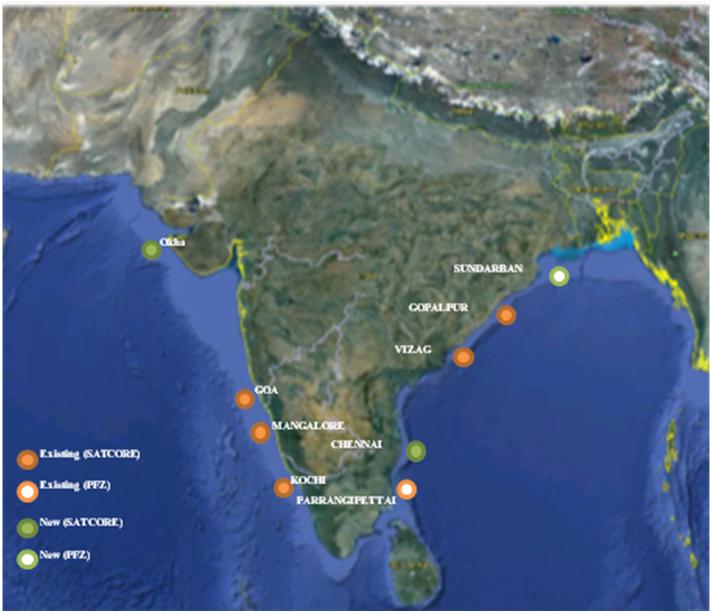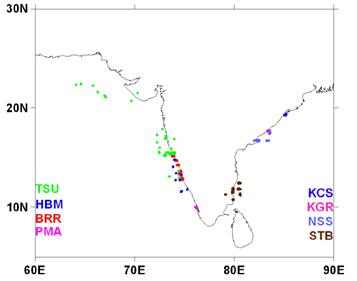ESSO - Indian National Centre for Ocean Information Services
(An Autonomous Body under the Ministry of Earth Sciences, Govt. of India)
Satellite Coastal and Oceanography Research (SATCORE)
The ocean colour analysis also has proven to be an efficient tool for determining health of the ocean by measuring oceanic biological activity through optical means. Phytoplankton pigment acts as an indicator of the equilibrium of CO2 concentration between atmosphere and ocean. The other optical aquatic component such as Chromophoric dissolved organic matter (CDOM) and total suspended matter (TSM) also acts as an ecological indicators. The oceanic colour change due to chlorophyll_a provides the level of primary productivity whereas the colour change due to CDOM can be attributed to the level of pollution and higher particulate matter in suspension can be directly linked to wave and current energy. The advent of the satellite technology has given a substantial boost to the ocean colour research. The ability of optical sensor to map the spatial and temporal patterns of ocean colour over regional and global scales has provided important insights into the fundamental bio-optical properties and bio-physical processes occurring in the aquatic media. However the satellite based retrieval of ocean colour parameters demands an accurate bio-optical algorithm especially in the coastal waters and such algorithm require large in situ database for a specific area.

To address these issues Satellite Coastal and Oceanographic Research (SATCORE) programme was initiated. INCOIS started coordinating SATCORE programme from XI-five year plan with an aim of long term measurements of bio-optical properties in the Indian coastal waters. The principle aim was to validate the satellite derived ocean products in coastal waters and subsequently application in operational services such as location of potential fishing zone (PFZ) and detection and monitoring of Algal Blooms (ABs). Apart from these, the other objectives of SATCORE programme are to develop new algorithms for ocean colour satellite sensor, improve atmospheric correction schemes and application of ocean colour data for modelling primary productivity. SATCORE also supplements the global initiative Chlorophyll Global Integration Network (ChloroGIN) which aims towards generation of ocean colour data products from operational satellite sensors at near real-time (NRT) for operational applications.
Data availability from SATCORE program

Figure: Schematic showing the sampling locations at which the data was generated as a part of SATCORE programme
A valuable data set of physical, optical and bio-geo-chemical was generated from SATCORE programme for the period from 2008 - 2013. The measured parameters include: Chlorophyll_a (Chl-a), Coloured Dissolved Organic Matter (CDOM), Total Suspended Matter (TSM), Inherent Optical Properties (IOP) including absorption and scattering coefficients, Apparent Optical Properties (AOP) measured using hyperspectral radiometer, measurement using Conductivity-Temperature-Depth (CTD) instrument, Nutrients, Aerosol Optical Thickness (AOT) and Meteorological parameters (Met) measured using Autonomous Weather Station (AWS).



